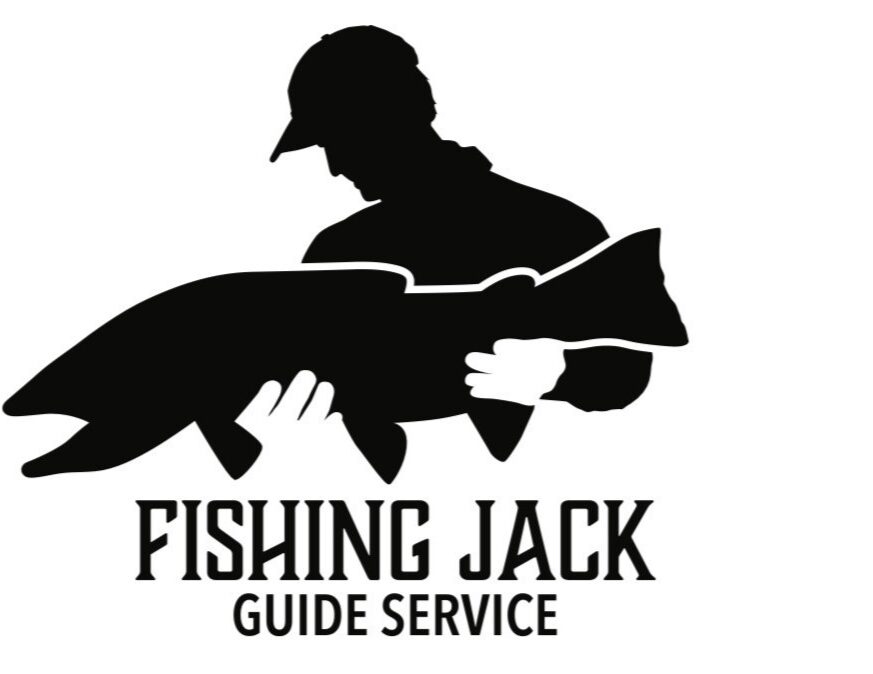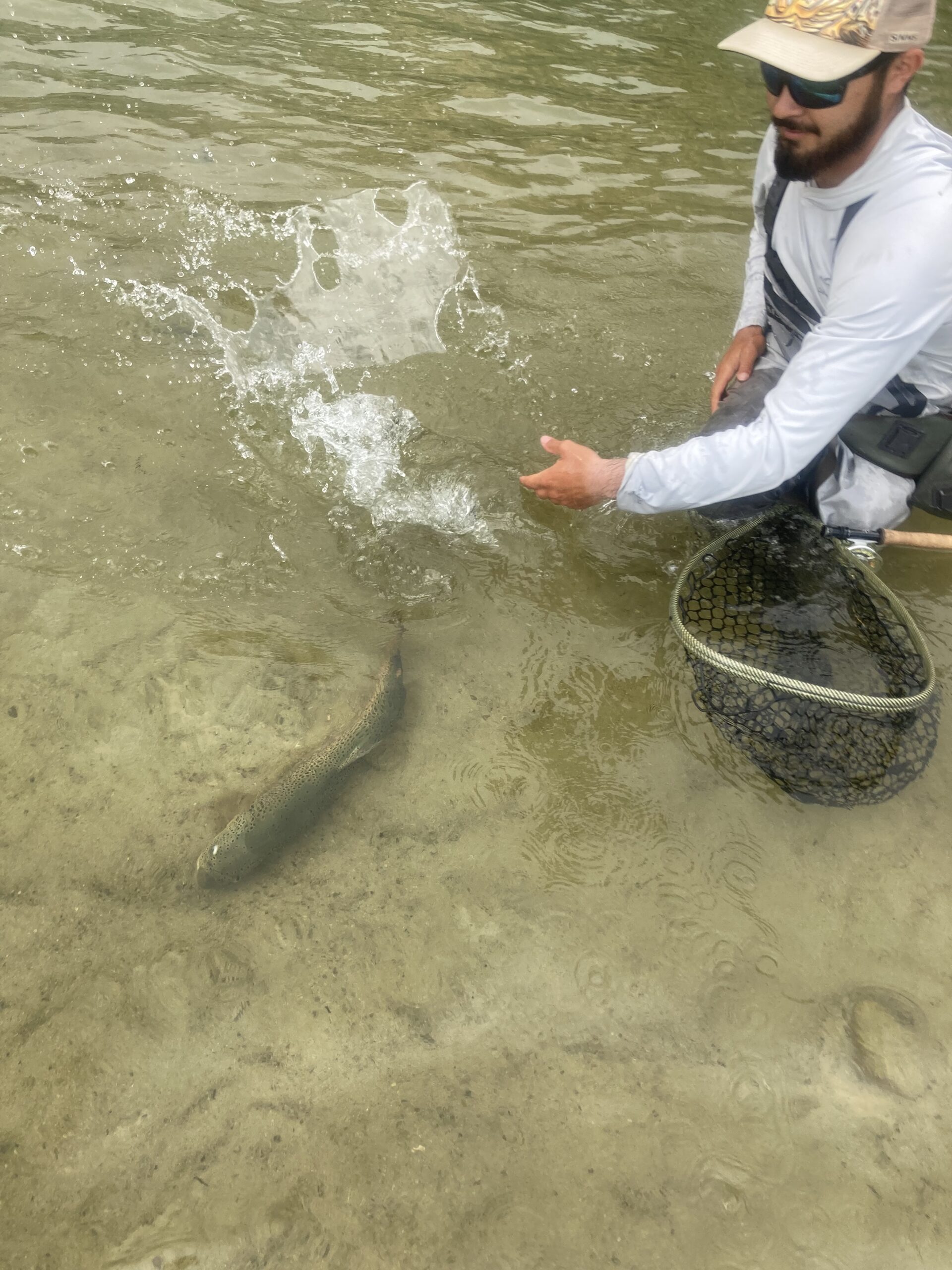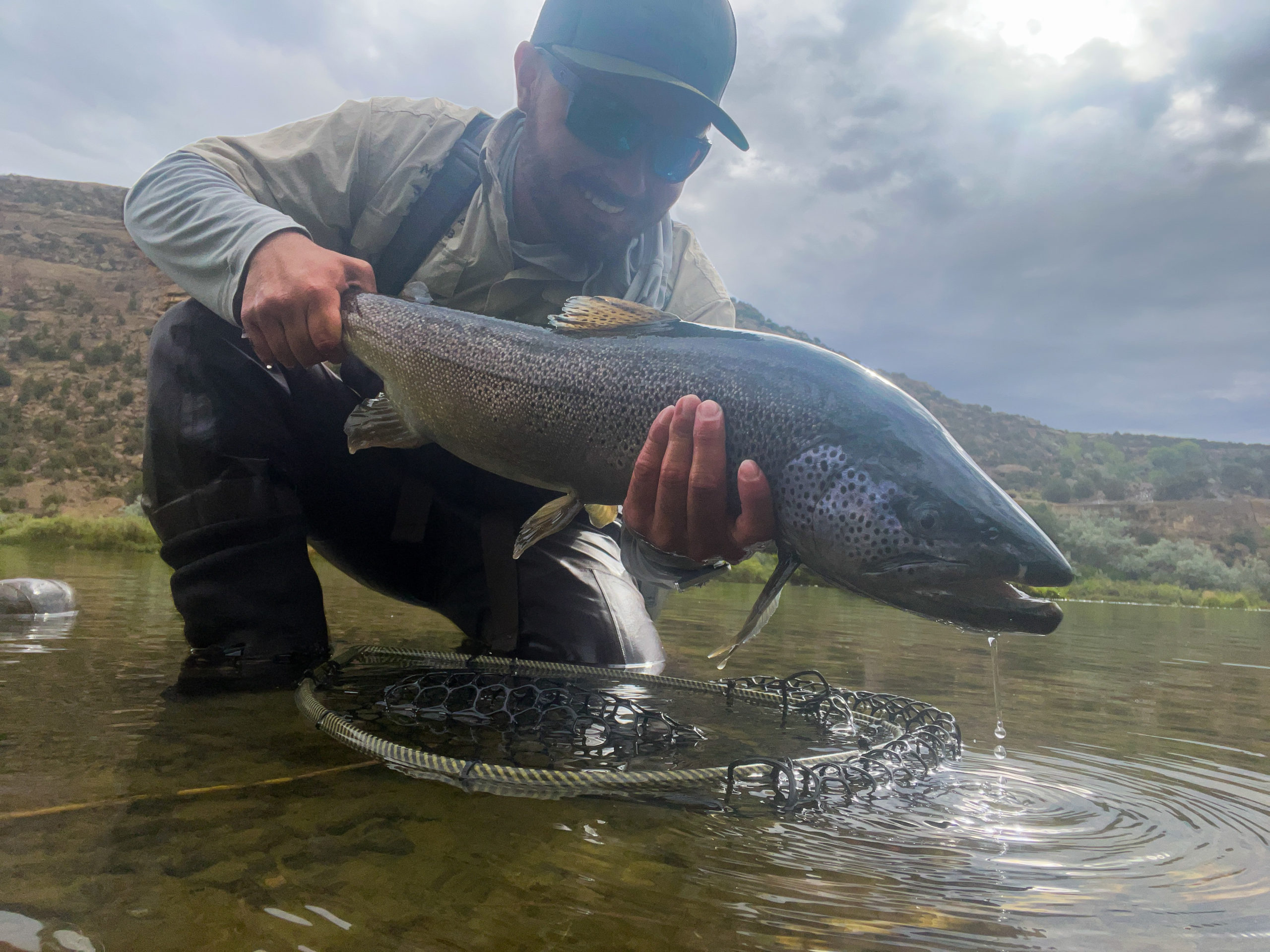Low flow on a technical tailwater. You either love it or hate it.
One critical component of understanding a river to its fullest extent is to experience it as its easiest, and most difficult. Higher flows (~600 or higher) generally invite more opportunities for anglers on the San Juan. The fish are less confined to one body of water, indicators plummet in relation to faster moving current, and the fish are less spooky. Lower flows are often quite the opposite. Fish will begin to “pod up” where they are most comfortable, which can make them less widely accessible. Likewise, the same bodies of water which were once moving quickly, are now modified to still-water-like conditions — making eats less noticeable, and the fish more skittish.
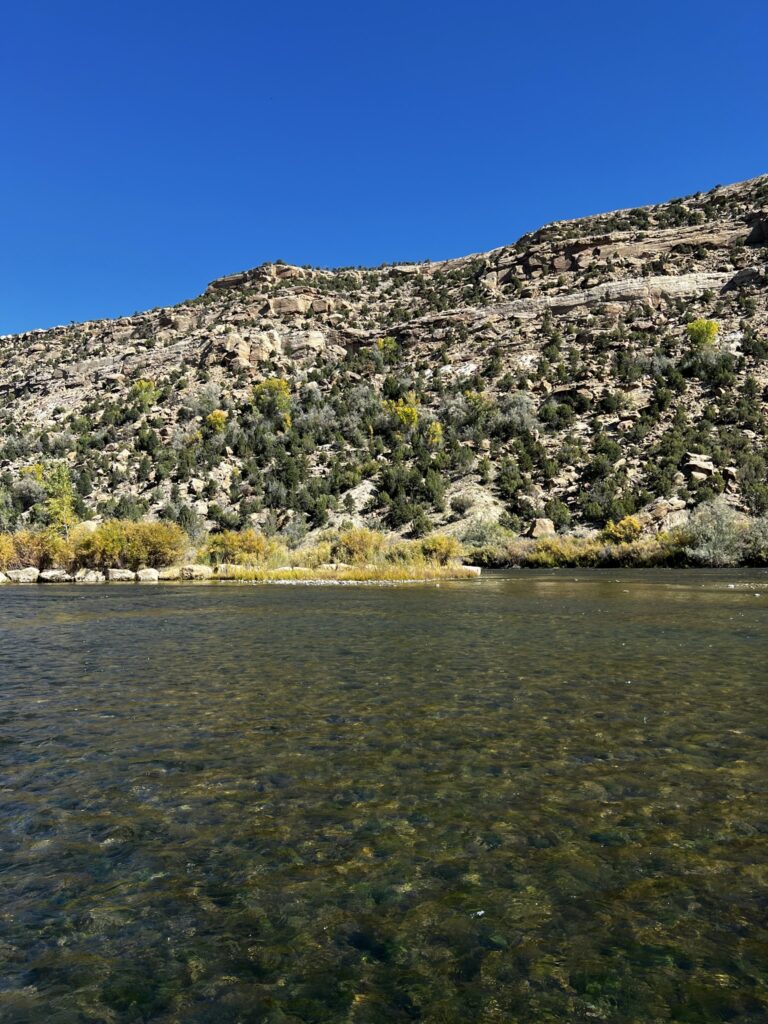
The Juan is a fantastic, but very unpredictable tailwater. The discharge from the dam is controlled by the Bureau of Reclamation and varies upon demand from other locations that need water (like most tailwaters). At the time of writing this article, the river is flowing around 300cfs. Having experienced a low flow last year for a lengthy period of time, I figured now would be a good time to share with you my thoughts on being successful when the San Juan is at its most finicky.
1.) See the eat.
Sight fishing will always be my biggest key to success, but it becomes critical at a low flow. As aforementioned, there is an important relationship between your indicator, and the speed at which the current is moving. Often times we assume our indicator plummets because a fish eats our fly and swims away. However, it is often the current that pulls our indicator down, and not the fish. Take a moment to visualize this.
Imagine you are at a lake and tie a line to a small bobber. You then make the line just long enough to reach the bottom of the lake and tie it to a rock. As long as a force is not pushing the bobber, it will never sink. Conversely, imagine the exact same setup, except the wind is blowing 40 miles per hour — causing white caps. If the force of the wind is strong enough, it will
occasionally submerge the bobber.
In this example, the bobber is the same as your indicator, but the wind simulates current. The rock, in this case, is the fish. Since many of these fish will not move far to eat your flies, it’s reasonable to assume that in very slow water, there may not be enough tension between the fish, fly, and indicator, to register an eat. Using the smallest size indicator to suspend your weight, in tandem with seeing the fish open its mouth or turn its head is paramount in these situations.
2.) Your split shot becomes your best friend, or worst enemy.
Have you ever thought about how your flies look to the fish? If you were a fish and saw your own flies drifting in the water, would you see the main course at a 5-star restaurant, or the wrecking ball from Miley Cyrus’s music video? If you’re fishing too heavy, most likely the latter.
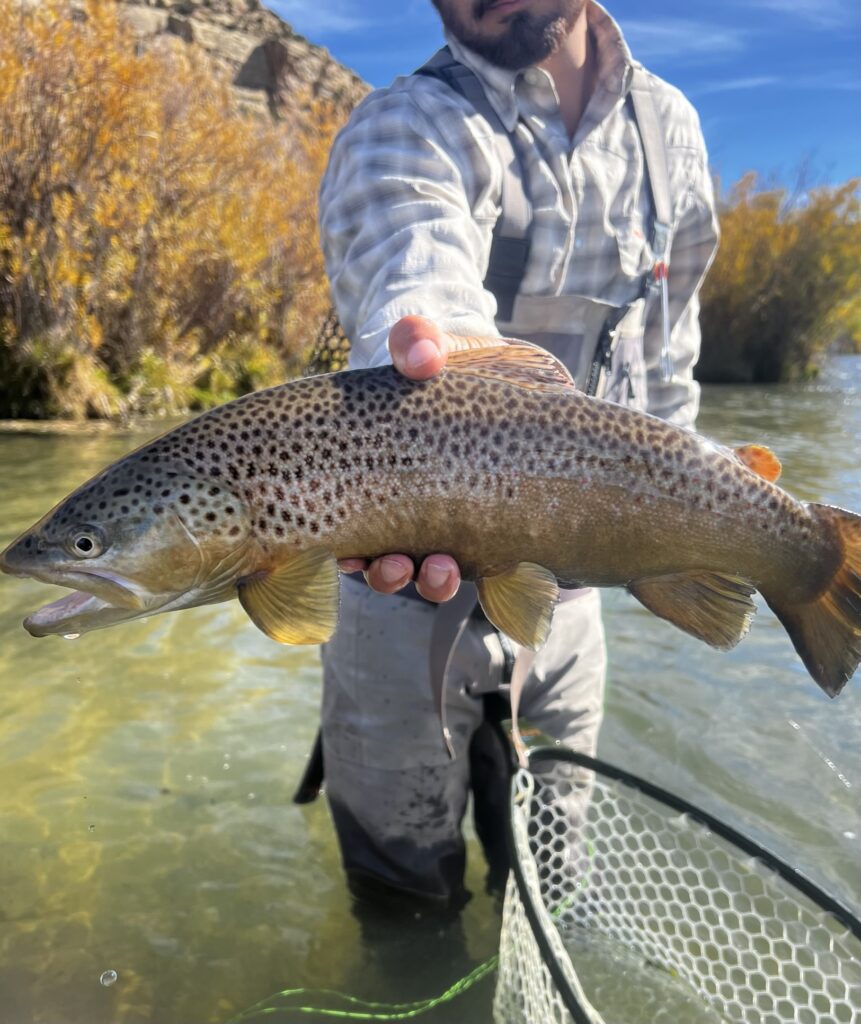
The size of the split shot you are using can make or break your drift. Obviously, the fish are not concerned with the size split shot you are using — rather the one or two flies behind them. One thing you can get away with at a higher flow (sometimes) is not using the ideal amount of weight. Occasionally I will rig for a stranger at the river to help them get into fish, and when I look at their split shot case, the heavier ones are usually the first to go. This is often because many anglers are not taught to mentally visualize where their flies are, so they overcompensate the amount of weight they actually need in order to “ensure their flies are getting down there”. At a higher flow, when the fish may typically be sitting in deeper and faster water, this may work. When the river drops, however, the fish become much more drift sensitive. They have a much, much longer time to examine your flies and rate at which they are moving. If something doesn’t look quite right, they may reject your offering. This usually has very little to do with what flies you are fishing, but A LOT to do with how you are fishing them.
At a lower flow, experiment with different sink rates. I have had success fishing very long rigs around 7-8ft in only 4-5 feet of water, with a size 8 split shot. While floating in the drift boat, it’s as simple as casting and waiting, but when anchored up or fishing on foot, you will need to cast a farther distance to appropriately time the sink rate with your desired fish’s depth. Inversely, you could fish heavier than you expect to need, get down to depth quicker, and cast closer to your target fish. However, in my experience, the former has been more successful for me. This is a very important decision to make while you’re on the water, hence why your split shot can be your best friend, or worst enemy. It’s all about timing, not your flies.
3.) Use all your available resources to make decisions– think critically.
This is a really important one. You should always make informed decisions on how to fish a piece of water, what flies to use, when to start, when to leave, etc. The difference at a low flow, however, is these decisions become even more pertinent to your successful day on the water.
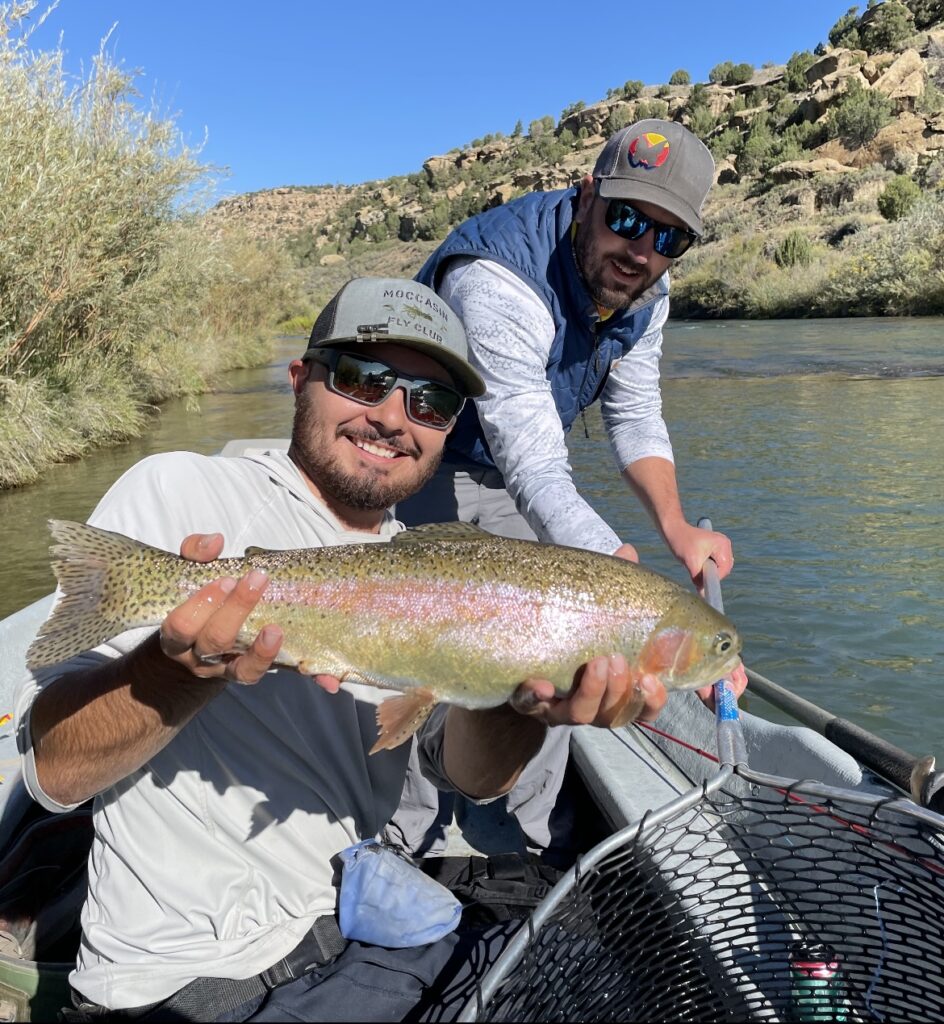
You may begin by checking the weather. When the water is low, it is more susceptible to temperature swings in sections of the river that are distal to the dam. The back channel of Munoz is a great example. At 300 cfs in the middle of the summer, I can reasonably assume that lower water means warmer water — which informs how I might want to rig in that particular section. If the surface of the water is 56 degrees, and the bottom is closer to 48 degrees, I would take a wild guess that I might not see too many high-column fish. In the same scenario in the dead of winter, I would also suspect that those fish may be very lethargic and hugging bottom for the majority of the day.
Another characteristic of a low flow is algae. That same stuff you have to slap off your flies every 10 minutes can give you clues about the fish you may be targeting. For example, there is a bed of algae near the bottom of a fast run at the top of the braids. The algae is thick and is typically covered in water, but at a lower flow, it nearly fills the entire water
column (4-5 inches of water with 4-5 inches of algae). If I were to fish above the algae in the fast and turbulent water, I could use bigger flies like worms or leeches. Below the algae, however, many of these bigger flies are filtered out, leaving the smaller midges to pass by with relative ease, which would lead me to believe the fish below the bed are “midge heavy”. Furthermore, the algae piles could be a breeding ground for other aquatic insects, which will eventually be released once the flow is bumped up again. Much like after a heavy rainfall, many people will fish worm patterns — it’s a good idea to stop and look around once in a while to gain clues. Low flows force you to do this because there is no quick substitute to knowing the river.
The best learning experience on the San Jaun is when the river is below 400cfs. Fishing at the low flow informs you on the things you need to work on the most, because this is when the fish will take the most advantage of you.
To learn more, please contact me to setup your next guided trip. Head over to my YouTube channel for more info below.
